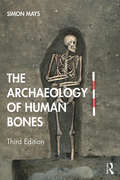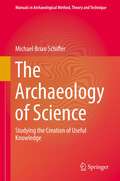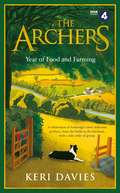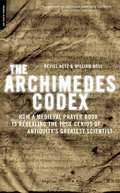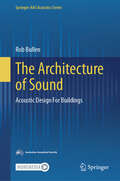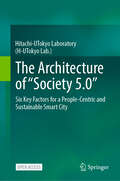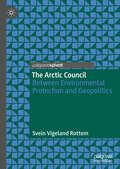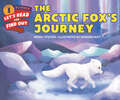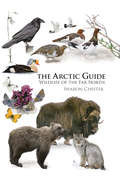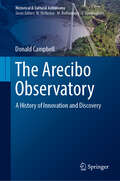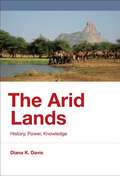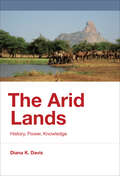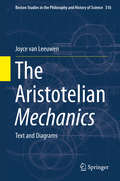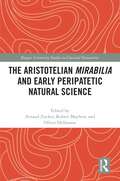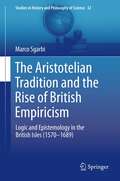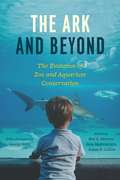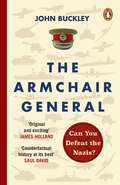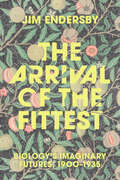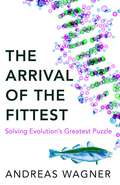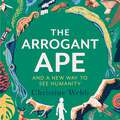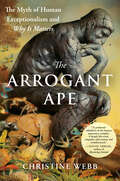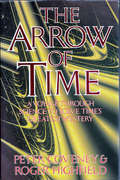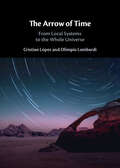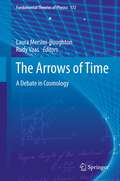- Table View
- List View
The Archaeology of Human Bones
by Simon MaysThe Archaeology of Human Bones provides an up to date account of the analysis of human skeletal remains from archaeological sites, introducing students to the anatomy of bones and teeth and the nature of the burial record. Drawing from studies around the world, this book illustrates how the scientific study of human remains can shed light upon important archaeological and historical questions. This new edition reflects the latest developments in scientific techniques and their application to burial archaeology. Current scientific methods are explained, alongside a critical consideration of their strengths and weaknesses. The book has also been thoroughly revised to reflect changes in the ways in which scientific studies of human remains have influenced our understanding of the past, and has been updated to reflect developments in ethical debates that surround the treatment of human remains. There is now a separate chapter devoted to archaeological fieldwork on burial grounds, and the chapters on DNA and ethics have been completely rewritten. This edition of The Archaeology of Human Bones provides not only a more up to date but also a more comprehensive overview of this crucial area of archaeology. Written in a clear style with technical jargon kept to a minimum, it continues to be a key work for archaeology students.
The Archaeology of Science
by Michael Brian SchifferThis manual pulls together--and illustrates with interesting case studies--the variety of specialized and generalized archaeological research strategies that yield new insights into science. Throughout the book there are templates, consisting of questions, to help readers visualize and design their own projects. The manual seeks to be as general as possible, applicable to any society, and so science is defined as the creation of useful knowledge--the kinds of knowledge that enable people to make predictions. The chapters in Part I discuss the scope of the archaeology of science and furnish a conceptual foundation for the remainder of the book. Next, Part II presents several specialized, but widely practiced, research strategies that contribute to the archaeology of science. In order to thoroughly ground the manual in real-life applications, Part III presents lengthy case studies that feature the use of historical and archaeological evidence in the study of scientific activities.
The Archers Year Of Food and Farming: A celebration of Ambridge's most delicious produce, from the fields to the kitchens, with a side order of gossip
by Keri Davies'What's for tea, Clarrielove?' From the fabled kitchens of Ambridge come the recipes and gossip that fuel the nation's favourite village.Whether it's Susan's spicy chilli con carne on the hob or Helen's dramatic tuna bake in the oven, Jill's flapjacks stacked high or Alastair's Goan fish curry hotting up suppertime, this celebration of Ambridge life will take fans even closer to the heart of every Archers home.But this book isn't just a cook-along with our favourite families. It's full to the brim with tales and memories. The Archers Year of Food and Farming shares the ups and downs of the inhabitants of Ambridge and celebrates our countryside in all of its green and pleasant glory.Month-by-month, we learn more about the farming community and those big events in the Ambridge calendar: Shrove Tuesday and Easter, lambing, Open Farm Sunday, the village fete, Apple Day, the harvest, Stir-up Sunday and Deck the Hall.Rural traditions are alive and well in The Archers, but it's a contemporary world that is full of warmth, wit and the unexpected.
The Archers Year Of Food and Farming: A celebration of Ambridges most delicious produce, from the fields to the kitchens, with a side order of gossip
by Keri Davies'What's for tea, Clarrielove?' From the fabled kitchens of Ambridge come the recipes and gossip that fuel the nation's favourite village.Whether it's Susan's spicy chilli con carne on the hob or Helen's dramatic tuna bake in the oven, Jill's flapjacks stacked high or Alastair's Goan fish curry hotting up suppertime, this celebration of Ambridge life will take fans even closer to the heart of every Archers home.But this book isn't just a cook-along with our favourite families. It's full to the brim with tales and memories. The Archers Year of Food and Farming shares the ups and downs of the inhabitants of Ambridge and celebrates our countryside in all of its green and pleasant glory.Month-by-month, we learn more about the farming community and those big events in the Ambridge calendar: Shrove Tuesday and Easter, lambing, Open Farm Sunday, the village fete, Apple Day, the harvest, Stir-up Sunday and Deck the Hall.Rural traditions are alive and well in The Archers, but it's a contemporary world that is full of warmth, wit and the unexpected.
The Archimedes Codex: How a Medieval Prayer Book Is Revealing the True Genius of Antiquity's Greatest Scientist
by Reviel NetzPart archaeological detective story, part science, and part history, The Archimedes Codex tells the astonishing story of a lost manuscript, from its tenth-century creation in ancient Constantinople to the auction block at Christie’s in New York, and how a team of scholars used the latest imaging technology to reveal and decipher the original text. What they found was the earliest surviving manuscript by Archimedes (287 BC#150;212 BC), the greatest mathematician of antiquity#151;a manuscript that established, for the first time, the extent of his mathematical genius, which was two thousand years ahead of modern science.
The Architecture of Sound: Acoustic Design For Buildings (Springer-AAS Acoustics Series)
by Rob BullenThis book highlights the range of issues involved in designing interior spaces for acoustics—that is, ensuring that the sound of a space matches its function. The book presents the principles of acoustic design, together with practical advice on how to apply those principles. The fundamental elements of background sound, intruding sound, sound quality, and speech intelligibility are each described, with design goals, calculation procedures, and advice on implementation. Contemporary challenges associated with integrating acoustics and sustainable building design are also covered. Finally, two types of space—school classrooms and hospital wards—are considered in detail, as examples.
The Architecture of “Society 5.0”: Six Key Factors for a People-Centric and Sustainable Smart City
by Hitachi-UTokyo LaboratoryThis open access book introduces H-UTokyo Lab’s ideas about the architecture for Society 5.0, including the process and organizational infrastructure for building smart cities that embody the Society 5.0 vision. It introduces six factors critical to the success of efforts to build people-centric sustainable smart cities. Each factor represents something needed to enable a local government to build a smart city, address the local issues, and ensure that these efforts contribute toward a people-centric sustainable society. The book is not only focused on initiatives that use digital innovation but extends beyond technological aspects, it also emphasizes the overall architecture—the general structures and organizational designs that encompass digital initiatives among other things. Through this book, readers get a better understanding of the current status of the smart-city agenda and its future path. The book is designed to serve as a handbook for public officials in national and local government, for businesspeople, for academics, for those in the third sector, and for any other actor involved in this undertaking.
The Arctic Council: Between Environmental Protection and Geopolitics
by Svein Vigeland RottemThis pivot introduces the Arctic Council and its role as a platform for dealing with local, national, regional and global challenges of relevance to the “new” Arctic. Against the backdrop of climate change and increasing commercial activity, it considers what a future Arctic should look like, from ideas of total protection to expansive oil and gas extraction. It examines the Arctic’s position on the political agenda, from Norway’s High North hype to a more peripheral place in the foreign policy of the US and explores the Council's role as an important international forum for dialogue and cooperation on Arctic challenges and opportunities, and a significant arena for developing knowledge and learning about a changing region.
The Arctic Fox's Journey (Let's-Read-and-Find-Out Science 1)
by Wendy PfefferRead and find out about the arctic fox’s quest for survival in this colorfully illustrated nonfiction picture book.During the winter, the arctic fox begins an incredible journey. She heads north through the tundra, toward the top of the world. No larger than a house cat, she faces treacherous obstacles, frightening predators, and bitter cold along the way. It seems impossible that she could persist against the elements on her almost 2,000-mile journey—but she does.This is a clear and appealing science book for early elementary age kids, both at home and in the classroom. The Arctic Fox’s Journey is filled with gorgeous, accurate art and includes tons of visual aids like charts, sidebars, an infographic, as well as a hands-on activity all about camouflage.This is a Level 1 Let's-Read-and-Find-Out, which means the book explores introductory concepts perfect for children in the primary grades. The 100+ titles in this leading nonfiction series are:hands-on and visualacclaimed and trustedgreat for classroomsTop 10 reasons to love LRFOs:Entertain and educate at the same timeHave appealing, child-centered topicsDevelopmentally appropriate for emerging readersFocused; answering questions instead of using survey approachEmploy engaging picture book quality illustrationsUse simple charts and graphics to improve visual literacy skillsFeature hands-on activities to engage young scientistsMeet national science education standardsWritten/illustrated by award-winning authors/illustrators & vetted by an expert in the fieldOver 130 titles in print, meeting a wide range of kids' scientific interestsBooks in this series support the Common Core Learning Standards, Next Generation Science Standards, and the Science, Technology, Engineering, and Math (STEM) standards. Let's-Read-and-Find-Out is the winner of the American Association for the Advancement of Science/Subaru Science Books & Films Prize for Outstanding Science Series.
The Arctic Guide: Wildlife of the Far North
by Sharon ChesterThe Arctic Guide presents the traveler and naturalist with a portable, authoritative guide to the flora and fauna of earth's northernmost region. Featuring superb color illustrations, this one-of-a-kind book covers the complete spectrum of wildlife--more than 800 species of plants, fishes, butterflies, birds, and mammals--that inhabit the Arctic's polar deserts, tundra, taiga, sea ice, and oceans. It can be used anywhere in the entire Holarctic region, including Norway's Svalbard archipelago, Siberia, the Russian Far East, islands of the Bering Sea, Alaska, the Canadian Arctic, and Greenland. Detailed species accounts describe key identification features, size, habitat, range, scientific name, and the unique characteristics that enable these organisms to survive in the extreme conditions of the Far North. A color distribution map accompanies each species account, and alternative names in German, French, Norwegian, Russian, Inuit, and Inupiaq are also provided. Features superb color plates that allow for quick identification of more than 800 species of plants, fishes, butterflies, birds, and mammals Includes detailed species accounts and color distribution maps Covers the flora and fauna of the entire Arctic region
The Arecibo Observatory: A History of Innovation and Discovery (Historical & Cultural Astronomy)
by Donald CampbellWritten by its former Director, this book presents a historical account of the famous Arecibo Observatory and its 305-meter radio astronomical telescope, widely known for its groundbreaking scientific discoveries and starring role in the James Bond movie, Golden Eye.The story details the planning, funding and construction of the telescope; the people who masterminded and contributed to the project; and the involvement of the US Department of Defense in funding the construction. It also includes the seminal scientific achievements in the three research areas to which the telescope contributed, ionospheric physics, planetary science and radio astronomy.The book continues through later upgrades made to the site, showing how the Arecibo telescope has arguably remained the world’s most versatile and productive radio science instrument for over 50 years. This historical account will fascinate astronomers and historians of science, serving as a valuable contribution to the history of 20th century astronomy.
The Arid Lands: History, Power, Knowledge
by Diana K. DavisDeserts are commonly imagined as barren, defiled, worthless places, wastelands in need of development. This understanding has fueled extensive anti-desertification efforts -- a multimillion-dollar global campaign driven by perceptions of a looming crisis. In this book, Diana Davis argues that estimates of desertification have been significantly exaggerated and that deserts and drylands -- which constitute about 41% of the earth's landmass -- are actually resilient and biodiverse environments in which a great many indigenous people have long lived sustainably. Meanwhile, contemporary arid lands development programs and anti-desertification efforts have met with little success. As Davis explains, these environments are not governed by the equilibrium ecological dynamics that apply in most other regions. Davis shows that our notion of the arid lands as wastelands derives largely from politically motivated Anglo-European colonial assumptions that these regions had been laid waste by "traditional" uses of the land. Unfortunately, such assumptions still frequently inform policy. Drawing on political ecology and environmental history, Davis traces changes in our understanding of deserts, from the benign views of the classical era to Christian associations of the desert with sinful activities to later (neo)colonial assumptions of destruction. She further explains how our thinking about deserts is problematically related to our conceptions of forests and desiccation. Davis concludes that a new understanding of the arid lands as healthy, natural, but variable ecosystems that do not necessarily need improvement or development will facilitate a more sustainable future for the world's magnificent drylands.
The Arid Lands: History, Power, Knowledge (History for a Sustainable Future)
by Diana K. DavisAn argument that the perception of arid lands as wastelands is politically motivated and that these landscapes are variable, biodiverse ecosystems, whose inhabitants must be empowered. Deserts are commonly imagined as barren, defiled, worthless places, wastelands in need of development. This understanding has fueled extensive anti-desertification efforts—a multimillion-dollar global campaign driven by perceptions of a looming crisis. In this book, Diana Davis argues that estimates of desertification have been significantly exaggerated and that deserts and drylands—which constitute about 41% of the earth's landmass—are actually resilient and biodiverse environments in which a great many indigenous people have long lived sustainably. Meanwhile, contemporary arid lands development programs and anti-desertification efforts have met with little success. As Davis explains, these environments are not governed by the equilibrium ecological dynamics that apply in most other regions. Davis shows that our notion of the arid lands as wastelands derives largely from politically motivated Anglo-European colonial assumptions that these regions had been laid waste by “traditional” uses of the land. Unfortunately, such assumptions still frequently inform policy. Drawing on political ecology and environmental history, Davis traces changes in our understanding of deserts, from the benign views of the classical era to Christian associations of the desert with sinful activities to later (neo)colonial assumptions of destruction. She further explains how our thinking about deserts is problematically related to our conceptions of forests and desiccation. Davis concludes that a new understanding of the arid lands as healthy, natural, but variable ecosystems that do not necessarily need improvement or development will facilitate a more sustainable future for the world's magnificent drylands.
The Aristotelian Mechanics
by Joyce Van LeeuwenThisbook examines the transmission processes of the Aristotelian Mechanics. It does so to enable readers to appreciate thevalue of the treatise based on solid knowledge of the principles of the text. In addition, the book's critical examination helps clear up many of the currentmisunderstandings about the transmission of the text and the diagrams. The first part of the book sets out the Greek manuscript tradition of the Mechanics, resulting in a newlyestablished stemma codicum that illustrates the affiliations of themanuscripts. This research has led to new insights into the transmission of thetreatise, most importantly, it also demonstrates an urgent need for a new text. A first critical edition of the diagrams contained in the Greek manuscripts ofthe treatise is also presented. These diagrams are not only significant for areconstruction of the text but can also be considered as a commentary on thetext. Diagrams are thus revealed to be a powerful tool in studying processes ofthe transfer and transformation of knowledge. This becomes especially relevantwhen the manuscript diagrams are compared with those in the printed editionsand in commentaries from the early modern period. The final part of the bookshows that these early modern diagrams and images reflect the altered scope ofthe mechanical discipline in the sixteenth century.
The Aristotelian Mirabilia and Early Peripatetic Natural Science (Rutgers University Studies in Classical Humanities)
by Arnaud ZuckerThis is the first volume devoted to the sections of the Aristotelian Mirabilia on natural science, filling a significant gap in the history of the Aristotelian study of nature and especially of animals. The chapters in this volume explore the Mirabilia, or De mirabilibus auscultationibus (On Marvelous Things Heard), and its engagement with the natural sciences. The first two chapters deliver an introduction to this work: one a discussion of the history of the text; the other a discussion of Aristotelian epistemology and methodology, and the role of the Mirabilia in that context. This is followed by eight chapters that, together, are effectively a commentary on those sections of the Mirabilia with close connections to Aristotle’s Historia animalium and to a number of Theophrastus’ scientific treatises. Finally, the volume ends with two chapters on thematic topics connected to natural science running throughout the work, namely color and disease. The Aristotelian Mirabilia and Early Peripatetic Natural Science should prove invaluable to scholars and students interested in the ancient Greek study of nature, ancient philosophy, and Aristotelian science in particular.
The Aristotelian Tradition and the Rise of British Empiricism
by Marco SgarbiOffers an extremely bold, far-reaching, and unsuspected thesis in the history of philosophy: Aristotelianism was a dominant movement of the British philosophical landscape, especially in the field of logic, and it had a long survival. British Aristotelian doctrines were strongly empiricist in nature, both in the theory of knowledge and in scientific method; this character marked and influenced further developments in British philosophy at the end of the century, and eventually gave rise to what we now call British empiricism, which is represented by philosophers such as John Locke, George Berkeley and David Hume. Beyond the apparent and explicit criticism of the old Scholastic and Aristotelian philosophy, which has been very well recognized by the scholarship in the twentieth century and which has contributed to the false notion that early modern philosophy emerged as a reaction to Aristotelianism, the present research examines the continuity, the original developments and the impact of Aristotelian doctrines and terminology in logic and epistemology as the background for the rise of empiricism.Without the Aristotelian tradition, without its doctrines, and without its conceptual elaborations, British empiricism would never have been born. The book emphasizes that philosophy is not defined only by the 'great names', but also by minor authors, who determine the intellectual milieu from which the canonical names emerge. It considers every single published work of logic between the middle of the sixteenth and the end of the seventeenth century, being acquainted with a number of surviving manuscripts and being well-informed about the best existing scholarship in the field.
The Ark and Beyond: The Evolution of Zoo and Aquarium Conservation (Convening Science: Discovery At The Marine Biological Laboratory Ser.)
by Ben A. Minteer Jane Maienschein James P. CollinsScores of wild species and ecosystems around the world face a variety of human-caused threats, from habitat destruction and fragmentation to rapid climate change. But there is hope, and it, too, comes in a most human form: zoos and aquariums. Gathering a diverse, multi-institutional collection of leading zoo and aquarium scientists as well as historians, philosophers, biologists, and social scientists, The Ark and Beyond traces the history and underscores the present role of these organizations as essential conservation actors. It also offers a framework for their future course, reaffirming that if zoos and aquariums make biodiversity conservation a top priority, these institutions can play a vital role in tackling conservation challenges of global magnitude. While early menageries were anything but the centers of conservation that many zoos are today, a concern with wildlife preservation has been an integral component of the modern, professionally run zoo since the nineteenth century. From captive breeding initiatives to rewilding programs, zoos and aquariums have long been at the cutting edge of research and conservation science, sites of impressive new genetic and reproductive techniques. Today, their efforts reach even further beyond recreation, with educational programs, community-based conservation initiatives, and international, collaborative programs designed to combat species extinction and protect habitats at a range of scales. Addressing related topics as diverse as zoo animal welfare, species reintroductions, amphibian extinctions, and whether zoos can truly be “wild,” this book explores the whole range of research and conservation practices that spring from zoos and aquariums while emphasizing the historical, scientific, and ethical traditions that shape these efforts. Also featuring an inspiring foreword by the late George Rabb, president emeritus of the Chicago Zoological Society / Brookfield Zoo, The Ark and Beyond illuminates these institutions’ growing significance to the preservation of global biodiversity in this century.
The Armchair General: Can You Defeat the Nazis? (The Armchair General #1)
by John BuckleyA ground-breaking approach to history where YOU choose the fate of WWII - perfect for readers of Bletchley Park Brainteasers and The GCHQ Puzzle Book.''An original and exciting approach . . . Buckley is one of our very finest historians.' JAMES HOLLAND________________________TAKE THE HOTSEATAssume the role of real Generals, Leaders, Soldiers and Intelligence Officers in the Allied Forces during WWII, including Winston Churchill and President Eisenhower.EXAMINE THE INTELLIGENCEExplore eight key moments of the war with real contemporaneous intelligence: Britain's Darkest Hour, 1940; The War in North Africa; Stalin's War on the Eastern Front; The Pacific Battle of Midway; The Dresden Bomber Offensive; Casablanca; Arnhem and Operation Market Garden; The Bomb and Hiroshima.CONSIDER THE SCENARIO & MAKE YOUR DECISIONFrom battlefields to war cabinets, each tactical and strategic decision you make leads to a different outcome.Will you follow the path of the past - or shape a new history?________________________'Wonderfully original . . . putting readers at the heart of the decision-making process and allowing them, literally, to change the course of history. This is counterfactual history at its best.' SAUL DAVID'A reminder that history is a never ending now, a relentless and endless present that comes without the luxury of hindsight.' AL MURRAY'An original and exciting approach . . . Buckley is one of our very finest historians. The Armchair General adds enormously to our understanding of the conflicts.' JAMES HOLLAND'A unique, enjoyable approach to evaluating military decision-making.' HISTORY OF WAR
The Arrival of the Fittest: Biology's Imaginary Futures, 1900–1935
by Jim EndersbyIn the early twentieth century, varied audiences took biology out of the hands of specialists and transformed it into mass culture, transforming our understanding of heredity in the process. In the early twentieth century communities made creative use of the new theories of heredity in circulation at the time, including the now largely forgotten mutation theory of Hugo de Vries. Science fiction writers, socialists, feminists, and utopians are among those who seized on the amazing possibilities of rapid and potentially controllable evolution. De Vries’s highly respected scientific theory only briefly captured the attention of the scientific community, but its many fans appropriated it for their own wildly imaginative ends. Writers from H.G. Wells and Edith Wharton to Charlotte Perkins Gilman, J.B.S. Haldane, and Aldous Huxley created a new kind of imaginary future, which Jim Endersby calls the biotopia. It took the ambiguous possibilities of biology—utopian and dystopian—and reimagined them in ways that still influence the public’s understanding of the life sciences. The Arrival of the Fittest recovers the fascinating, long-forgotten origins of ideas that have informed works of fiction from Brave New World to the X-Men movies, all while reflecting on the lessons—positive and negative—that this period might offer us.
The Arrival of the Fittest: Solving Evolution's Greatest Puzzle
by Andreas WagnerWe all know about natural selection and the so-called survival of the fittest, which governs how evolution preserves useful adaptations in each subsequent generation of a species. Unfortunately, random change alone could not have produced life as we know it - the maths don't add up, according to cutting-edge research by Andreas Wagner in the revolutionary field of computational biology.In the last decade, Wagner has detected the biological networks guiding the creation of innovation. His investigations of the genes of everything from bacteria to humans is rewriting our understanding of how exactly evolution works and providing insights into the origins of creativity, with lessons that can be applied far beyond genomes.In The Arrival of the Fittest, Wagner delivers a breathtaking new look at our origins, from the genes up.
The Arrogant Ape: And A New Way To See Humanity
by Christine Webb'I wish this book had been published five hundred years ago and been compulsory reading ever since' Jay Griffiths, author of How Animals Heal Us'A crucial and transformative read' Charles Foster, author of Being a Beast'Timely, intelligent and entertaining' Tristan Gooley, author of How to Read a Tree'Will leave you in awe' Justin Gregg, author of If Nietzsche Were A NarwhalMost people are certain that humans are the most intelligent, sophisticated, successful species on earth. But what if we're wrong? And what if our arrogant human exceptionalism is leading us to exploit the earth at the expense of other species - and destroy our own world in the process?In The Arrogant Ape, leading primatologist Christine Webb challenges our belief in human superiority by revealing underappreciated wonders of nonhuman life - from the language of songbirds and prairie dogs, to the cultures of chimpanzees and reef fishes, to the acumen of plants and fungi. She shows how human exceptionalism has even crept into the sciences, distorting how we study and understand other species. With fresh research into the rich social, emotional and cognitive lives of animals, and compelling stories from all over the world, The Arrogant Ape demonstrates how our belief in our own importance is directly linked to some of the greatest threats against us and our environment - and offers a hopeful, inspiring way forwards.
The Arrogant Ape: The Myth of Human Exceptionalism and Why It Matters
by Christine WebbAn impassioned celebration of humility before the living world that leads us to a new understanding of other species—and ourselvesDarwin considered humans one part of the web of life, not the apex of a natural hierarchy. Yet today many maintain that we are the most intelligent, virtuous, successful species that ever lived. This flawed thinking enables us to exploit the earth towards our own exclusive ends, throwing us into a perilous planetary imbalance. But is this view and way of life inevitable? The Arrogant Ape shows that human exceptionalism is an ideology that relies more on human culture than our biology, more on delusion and faith than on evidence.Harvard primatologist Christine Webb has spent years researching the rich social, emotional, and cognitive lives of our closest living relatives. She exposes the ways that many scientific studies are biased against other species and reveals underappreciated complexities of nonhuman life—from the language of songbirds and prairie dogs, to the cultures of chimpanzees and reef fishes, to the acumen of plants and fungi. With compelling stories and fresh research she gives us a paradigm-shifting way of looking at other organisms on their own terms, one that is revolutionizing our perception both of them and of ourselves.Critiques of human exceptionalism tend to focus on our moral obligation towards other species. They overlook what humanity also stands to gain by dismantling its illusions of uniqueness and superiority. This shift in perspective fills us with a sense of awe and satisfies one of our oldest and deepest desires to belong to the larger whole we inhabit. What&’s at stake is a better, sustainable way of life with the potential to heal and rejuvenate our shared planet.
The Arrow Of Time
by Roger Highfield Dr Peter CoveneyIn our century, the subject of time has become an area of serious inquiry for science. Theories that contain time as a simple quantity form the basis of our understanding of many scientific disciplines, yet the debate rages on: why does there seem to be a direction to time, an arrow of time pointing from past to future?In this authoritative and accessible Sunday Times bestseller, physical chemist Dr Peter Coveney and award-winning science journalist Dr Roger Highfield demonstrate that the common sense view of time agrees with the most advanced scientific theory. Time does in fact move like an arrow, shooting forward into what is genuinely unknown, leaving the past immutably behind. The authors make their case by exploring three centuries of science, offering bold reinterpretations of Newton’s mechanics, Einstein’s special and general theories of relativity, quantum mechanics, and advancing the insights of chaos theory. In their voyage through science the authors link apparently irreconcilable subjects, from Einstein’s obsession with causality to chaos theory, from Marvell’s winged chariot to that Monday morning feeling.Finally, drawing together the various interpretations of time, they describe a novel way to give it a sense of direction. And they call for a new fundamental theory to take account of the Arrow of Time.Foreword by Ilya Prigogine, Nobel laureate.
The Arrow of Time: From Local Systems to the Whole Universe
by Olimpia Lombardi Cristian LópezThe 'arrow of time,' a concept first introduced by Sir Arthur Eddington, reflects the one-way flow of time and its association with various physical asymmetries in thermodynamics, cosmology, quantum mechanics, field theories, and beyond. Yet, the foundations of the arrow of time continues to challenge physicists and philosophers, having profound implications across multiple theories and disciplines.This volume compiles insights from the international colloquium 'The Arrow of Time: From Local Systems to the Whole Univers' held in Buenos Aires in 2023. It explores diverse perspectives on the arrow of time in thermodynamics, quantum mechanics and cosmology, its relation to counterfactual reasoning, free will and the growing-block universe, the interplay between consciousness and time, and the implications of time-reversal invariance. Collectively, these contributions provide a rigorous and comprehensive analysis of the enduring enigma of time's unidirectional nature.
The Arrows of Time
by Laura Mersini-Houghton Rudy VaasThe concept of time has fascinated humanity throughout recorded history, and it remains one of the biggest mysteries in science and philosophy. Time is clearly one of the fundamental building blocks of the universe and thus a deeper understanding of nature at a fundamental level also demands a comprehension of time. Furthermore, the origins of the universe are closely intertwined with the puzzle of time: Did time emerge at the Big Bang? Why does the arrow of time 'conspire' with the order of the initial state of the universe? This book addresses many of the most important questions about time: What is time, and is it fundamental or emergent? Why is there such an arrow of time, closely related to the initial state of the universe, and why do the cosmic, thermodynamic and other arrows agree? These issues are discussed here by leading experts, and each offers a new perspective on the debate. Their contributions delve into the most difficult research topic in physics, also describing the latest cutting edge research on the subject. The book also offers readers a comparison between the different outlooks of philosophy, physics and cosmology on the puzzle of time. This volume is intended to be useful for research purposes, but most chapters are also accessible to a more general audience of scientifically educated readers looking for deeper insights.
